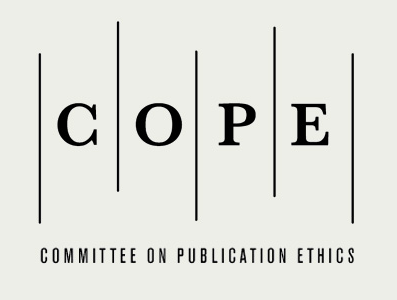ИКТ у верској настави као фактор подстицања емпатије
Нинослав З. Качарић, Висока школа – Академија СПЦ за уметности и консервацију, Београд, Србија, имејл:
Снежана В. Јокић, Универзитет у Новом Саду, Технички факултет „Михајло Пупин”, Зрењанин, Србија
Иновације у настави, XXXVIII, 2025/2, стр. 111–124
| PDF | | Extended summary PDF |
DOI: 10.5937/inovacije2502111K
Резиме: Циљ експлоративног истраживања квантитативног приступа које је презентовано у раду био је да се сагледа у коликој мери је примена ИКТ-а у верској настави значајан фактор подстицања емпатије. Истраживање је обухватило 125 студената Академије СПЦ за уметности и консервацију и Православног богословског факултета Универзитета у Београду, од којих је већина похађала верску наставу током претходног школовања. Примењена је метода систематског неексперименталног посматрања ‒ техником анкетирања сагледани су и тумачени подаци прикупљани онлајн-упитником Ликертовог типа у три дела, конструисаним за ову прилику: првим су прикупљени општи подаци о социодемографским карактеристикама испитаника; другим су студенти изражавали своје мишљење о коришћењу ИКТ-а у верској настави; трећим је утврђиван индекс интерперсоналне реактивности (енг. Interpersonal Reactivity Index – IRI) (Davis, 1983) ради добијања мултидимензионалне мере емпатијског реаговања. Анализе су укључивале фреквенцијске, корелационе и регресионе приступе, уз провере факторске структуре и поузданости коришћених инструмената. Приликом одабира оптималног броја фактора примењен је критеријум интерпретабилности, Гутман–Кајзеров критеријум и критеријум задржавања фактора у тачки прелома на скри дијаграму, те су одређена два фактора, чија је поузданост (ИНРЕ, α = .80) за први, односно (ГИМР, α = .66) за други фактор. Резултати указују да студенти умерено перципирају ИКТ као корисне за подстицање емпатије, при чему
интегративне и групне активности имају највећи потенцијал за унапређење емпатије и моралног развоја. Закључци сугеришу да увођење структурираних ИКТ активности, интерактивних алата и тематских дискусија у наставни процес може значајно побољшати ефекат верске наставе у развоју емпатије код младих. Истраживање препоручује обуку наставника за примену ИКТ-а, унапређење дигиталних садржаја и већи нагласак на групни рад као кључне кораке за оптимизацију наставе. Ограничења укључују релативно мали узорак и ослањање на самопроцену испитаника, док будућа истраживања могу укључити шири узорак, лонгитудиналне приступе и дубље анализе специфичних ИКТ алата.
Кључне речи: ИКТ, верска настава, емпатија
Summary: The aim of the exploratory research using the quantitative approach presented in this paper was to examine the extent to which the application of ICT in religious education is a significant factor in fostering empathy. The research included 125 students of the Academy of the Serbian Orthodox Church for Arts and Conservation and the Orthodox Theological Faculty of the University of Belgrade, most of whom attended religious education during their previous education. The method of systematic non-experimental observation was applied – the survey technique was used to examine and interpret the data collected by an online, Likert-type questionnaire in three parts, constructed for this occasion: the first part was used to collect general data on the socio-demographic characteristics of the respondents; in the second part, students were asked to express their opinion on the use of ICT in religious education; the third part determined the Interpersonal Reactivity Index (IRI) (Davis, 1983) in order to obtain a multidimensional measure of empathic response. The analyses included frequency, correlation, and regression approaches, along with the checks of the factor structure and reliability of the instruments used in the research. When selecting the optimal number of factors, the interpretability criterion, the Guttman–Kaiser criterion, and the criterion of retaining factors at the intersection point on the diagram were applied, and two factors were determined, the reliability of which was (INRE, α = .80) for the first, and (GIMR, α = .66) for the second factor. The results indicate that students moderately perceive ICT as useful for fostering empathy, with integrative and group activities having the greatest potential for enhancing empathy and moral development. The conclusions suggest that the introduction of structured ICT activities, interactive tools, and thematic discussions in the teaching process can significantly improve the effect of religious education in developing empathy in young people. The research recommends training teachers in the use of ICT, improving digital content, and placing greater emphasis on group work as key steps to optimise teaching. The limitations of the research include a relatively small sample size and the reliance on the respondents’ self-evaluation, while future research could include a larger sample size, longitudinal approaches, and more in-depth analyses of specific ICT tools.
Keywords: ICT, religious education, empathy
Литература:
- Batson, C. D. (2014). The altruism question: toword a social psychological answer. Psychology Press.
- Bruneau, M., & Saxe, E. (2011). Us and Them: Intergroup Failures of Empathy. Current Directions in Psychological Science, 20(3), 149. https://doi.org/10.1177/0963721411408713
- Cress, S. W., & Holm, D. T. (1998). Developing empathy through children’s literature. https://eric.ed.gov/?id=ED427316
- Davis, M. H. (1983). Measuring individual differences in empathy: Evidence for a multidimensional approach. Journal of Personality and Social Psychology, 44(1), 113–126. https://doi.org/10.1037/0022-3514.44.1.113
- Dimitrijević, D. (2020). Radioničarski rad u nastavi u kontekstu razvijanja empatije. Godišnjak za pedagogiju, 5(1), 93–104. https://doi.org/10.46630/gped.1.2020.07
- Fabrigar, L. R., Wegener, D. T., MacCallum, R. C., & Strahan, E. J. (1999). Evaluating the use of exploratory factor analysis in psychological research. Psychological Methods, 4(3), 272–299. https://doi.org/10.1037/1082-989X.4.3.272
- Gair, S. (2011). Creating spaces for critical reflection in social work education: Learning from a classroombased empathy project. Reflective Practice, 12(6), 791–802. https://doi.org/10.1080/14623943.2011.601099
- George, D., & Mallery, P. (2010). SPSS for Windows Step by Step: A Simple Guide and Reference, 17.0 Update (10th ed.). Allyn & Bacon.
- Goleman, D. (2007). Socijalna inteligencija. Geopoetika.
- Goretzko, D., Pham, T. T. H., & Bühner, M. (2019). Exploratory factor analysis: Current use, methodological developments and recommendations for good practice. Current Psychology, 40(7), 3510–3521. https://doi.org/10.1007/s12144-019-00300-2
- Hoffman, M. L. (1984). Interaction of Affect and Cognition in Empathy. In C. E. Izard, J. Kagan, & R. B. Zajonc (Eds.). Emotions, Cognition, and Behavior (pp. 103–131). https://books.google.rs/books?hl=sr&lr=&id=PVQ4AAAAIAAJ&oi=fnd&pg=PR9&dq=emphaty+hoffman&ots=Km3R3vgguy&sig=V_0ZRHIBvDUeWq1O3imV4Rugz2U&redir_esc=y#v=onepage&q=emphaty hoffman&f=false
- Hyman, H. H, Wright, C. R., & Reed, J. S. (1975). The enduring effects of education. The University of Chicago press.
- Jensen, J. (2008). Developing Historical Empathy through Debate: An Action Research Study. Social Studies Research and Practice, 3(1), 55–67.
- Jevtić, B., i Jovanović, A. (2018). Razvijanje prosocijalnosti u nastavi veronauke i građanskog vaspitanja. Naša škola, 2, 29–49.
- Kačarić, N. (2021). Kako učenici ocenjuju doprinos pojedinih elemenata verske nastave njihovom moralnom razvoju. Inovacije u nastavi, 34(2), 162–173.
- Kalliopuska, M. (1983). Empathy in school students. https://files.eric.ed.gov/fulltext/ED240423.pdf
- Kuburić, Z., i Dačić, S. (2004). Metodika verske nastave. Centar za empirijska istraživanja religije.
- Lasswell, H. (1963). Politics: who gets what, when, how. The World Publishing Company.
- Midić, I. (2004). Pravoslavni katihizis: priručnik za nastavnike osnovnih i srednjih škola. Zavod za udžbenike i nastavna sredstva.
- Radojković, M., i Stojković, B. (2009). Informaciono komunikacioni sistemi. Clio.
- Radovanović, V. (1993). Empatičnost srednjoškolskih nastavnika. Psihologija, 26(1–2), 11–50.
- Rozenberg, M. (2002). Jezik saosećanja: nenasilna komunikacija. Zavod za udžbenike i nastavna sredstva.
- Stojilković, A, Anđelković, I., i Stojiljković, J. (2013). Empatija, optimizam/pesimizam i psihosomatsko reagovanje kod obolelih od ulkusnih bolesti. Godišnjak za psihologiju, 10(12), 133–152.
- Tavakol, M., & Dennick, R. (2011). Making sense of Cronbach’s alpha. International Journal of Medical Education, 2, 53–55. https://doi.org/10.5116/ijme.4dfb.8dfd
Copyright © 2025 by the publisher Faculty of Education, University of Belgrade, SERBIA. This is an open access article distributed under the terms of the Creative Commons Attribution License (CC BY 4.0) (https://creativecommons.org/licenses/by/4.0/), which permits unrestricted use, distribution, and reproduction in any medium, provided the original paper is accurately cited.





